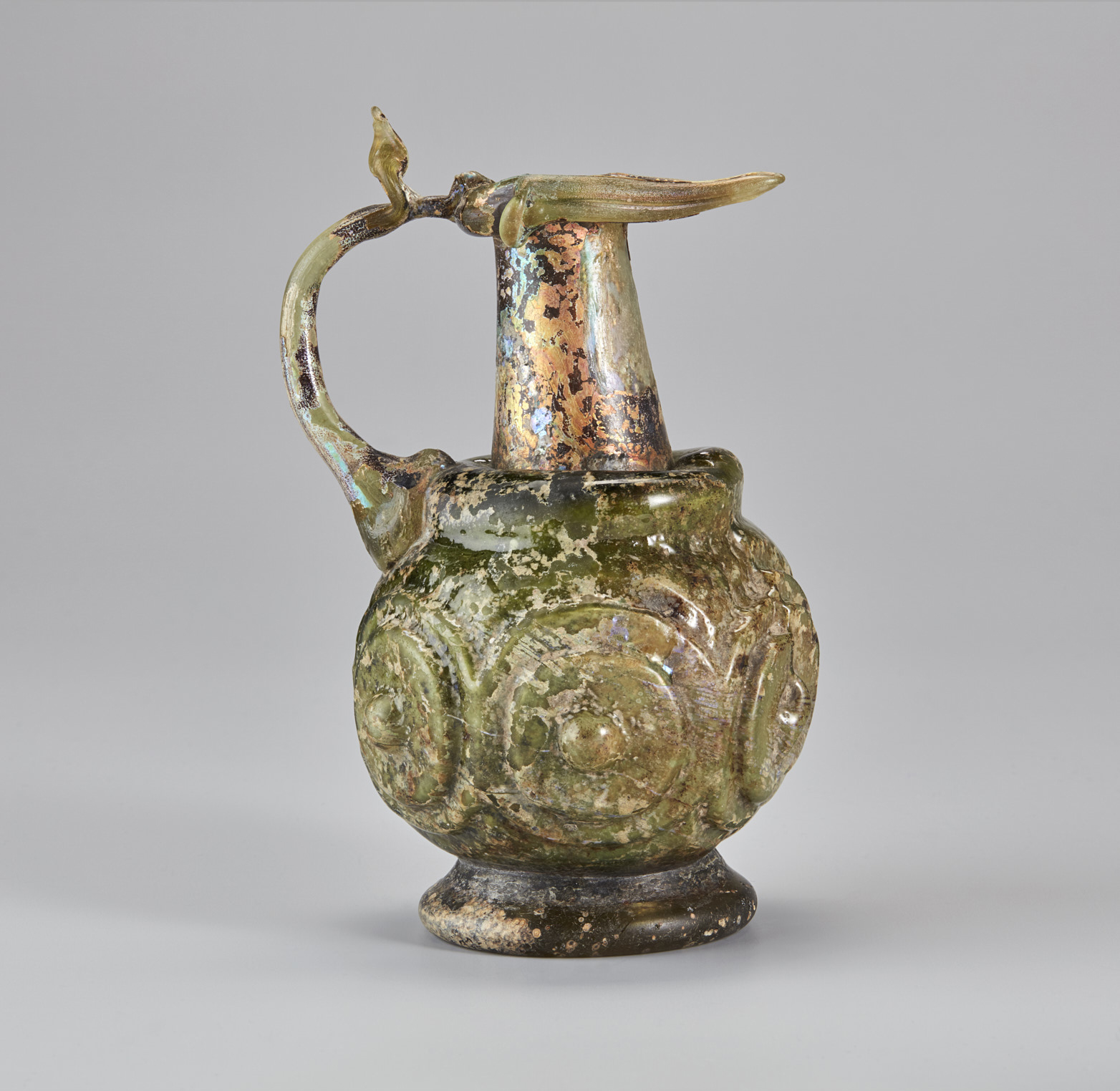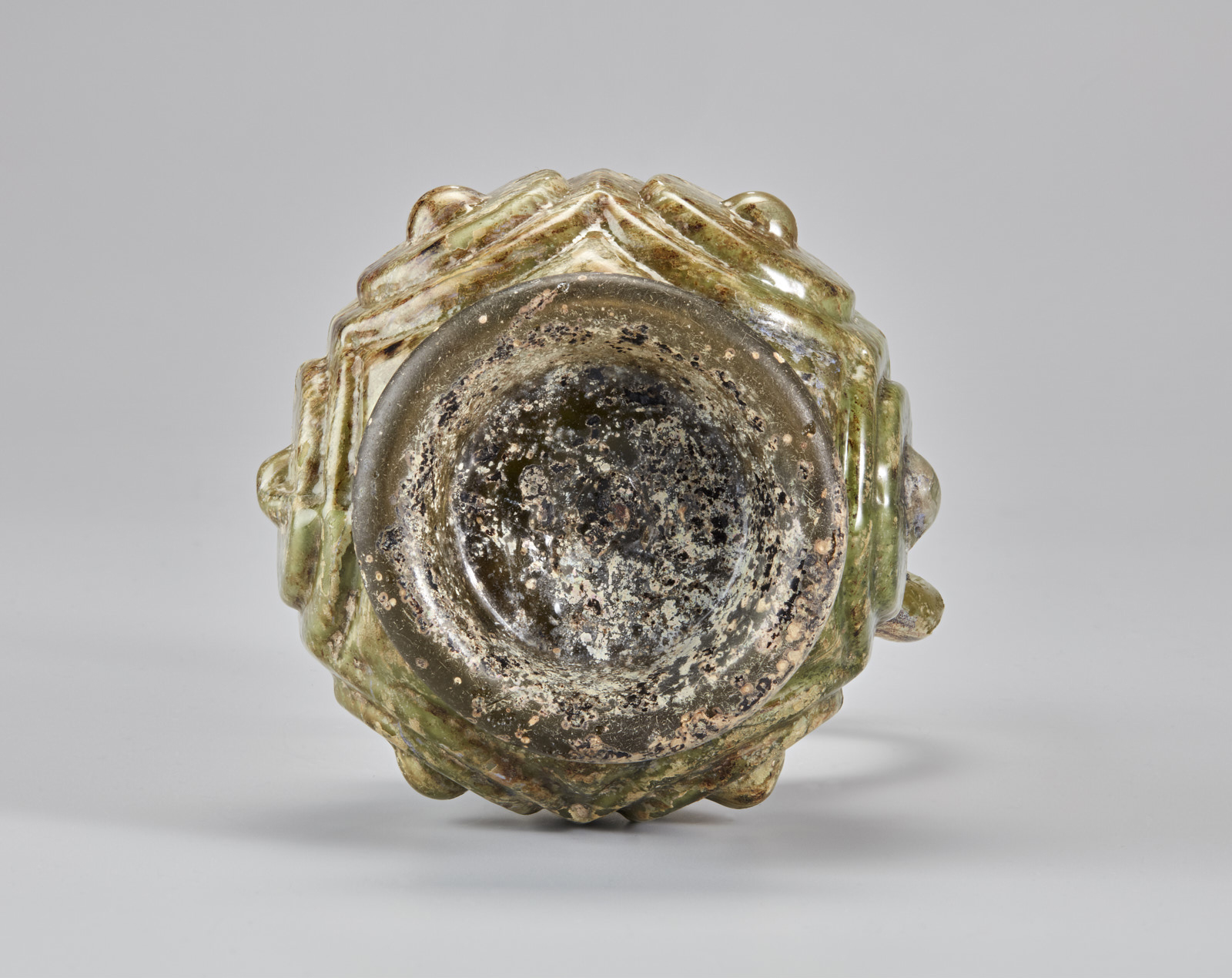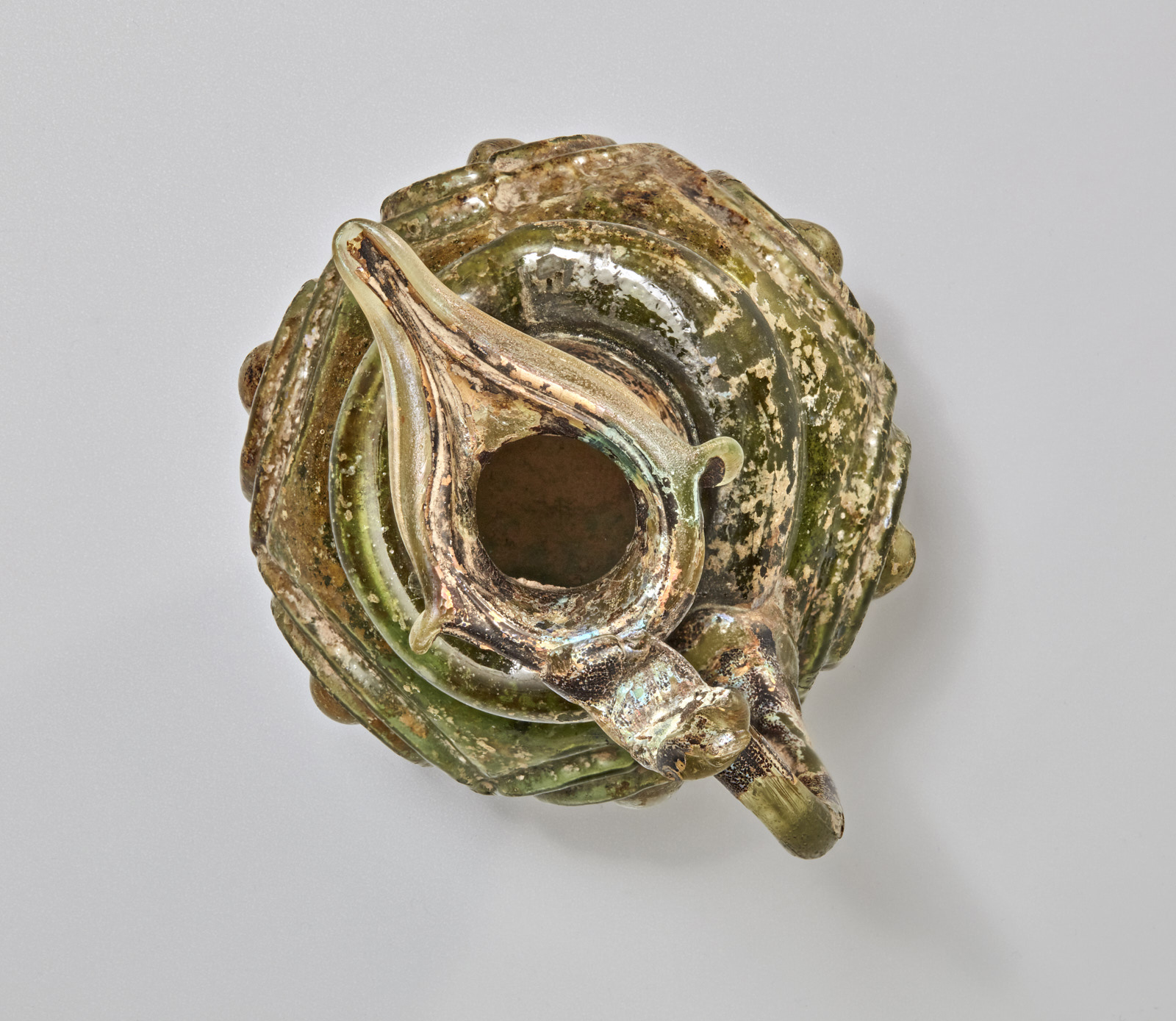Click on the image to zoom
Small Ewer
- Accession Number:AKM898
- Place:Iran or Afghanistan
- Dimensions:height: 15 cm; diameter: 9.5 cm
- Date:12th¬–13th century
- Materials and Technique:glass, green, intense weathering; mould-blown, applied, tooled, worked on the pontil
This ewer demonstrates different techniques that would require artisans skilled in working with hot glass, likely in a glasshouse used to producing daily commodities. The overlapping disks on its surface form a variation of the “concentric omphalos” pattern that consists of the continuous use of disks with a central projection in high relief.[1] Sometimes called a “ring-and-dot” motif, this variation creates the impression that two discs are arranged on top of the other and that, in the middle of the top disc, there is a protrusion.
Further Reading
To achieve the “ring-and-dot” pattern on this ewer a gather of glass was blown into a mould.[2] Because the six disks are arranged in a continuous frieze, the neighbouring disks overlap each other and create the illusion of an additional row of disks. The vertical to slightly diagonal distortions on the body suggest that some difficulties occurred when the glass was removed from the mould. Because mould lines are not visible on the base, a two-part mould can be excluded.
The ewer’s body rests on a high splayed footring created by folding the glass inward. The mark of a pontil (a hot metal rod with some glass attached to it) can be seen on its base, affirming its use during the tooling process. Tooling has created many of the ewer’s unusual details. The opening of the neck was also tooled to receive a pointed spout, and two flattened protrusions were created at the sides of the spout. A round handle was attached to the wide cylindrical neck by a thick blob of glass, then pulled upwards and attached to the rim. An unusual thumbrest was tooled with a pincer instrument to a drop-like shape. Such details reached by tooling connect this ewer to a plain ewer without a handle whose rim has also been pincered several times. That ewer in the al-Sabah Collection in Kuwait has been dated to the 9th to 10th centuries and given a suggested provenance of Afghanistan.[3]
The ewer has a thick stepped shoulder that has not been widely noticed on glass vessels of the Iranian region. Perhaps the half-post technique was used to add this cylindrical neck.
A flask in the Khalili Collection in London has stepped shoulders which may therefore have been something common for eastern Iranian glasshouses. The flask was dated to the 11th and 12th centuries and a provenance in Iran or Afghanistan was proposed.[4] Due to these relations a similar date and provenance can be suggested for this ewer in the Aga Khan Museum Collection.
— Jens Kröger
Notes
[1] In the Iranian region this exchange technique with pattern was used among wheel-cut glass during the 9th and 10th centuries. See Kröger, 129-135. Carboni, 74-75. 110-111. In later centuries the pattern was more common in the mould-blown technique.
[2] Kröger, 129–131; Carboni, 110–111.
[3] Carboni, 158, Cat. 3.13.
[4] Goldstein, 234–235, no. 271.
References
Carobni, Stefano and David Whitehouse, with contributions by Robert H. Brill and William Gudenrath. Glass of the Sultans. New York: The Metropolitan Museum of Art; Corning, NY: The Corning Museum of Glass; Athens: Benaki Museum; New Haven: Yale University Press, 2001. ISBN: 9780300088519
Goldstein, Sidney. Glass From Sasanian Antecedents to European Imitations, Nasser D. Khalili Collection of Islamic Art XV. London: The Nour Foundation in Association with Azimuth Editions, 2005. ISBN: 9781874780502
Kröger, Jens. Nishapur. Glass of the Early Islamic Period. New York: The Metropolitan Museum of Art, 1995. ISBN: 9780300192827
Note: This online resource is reviewed and updated on an ongoing basis. We are committed to improving this information and will revise and update knowledge about this object as it becomes available.










